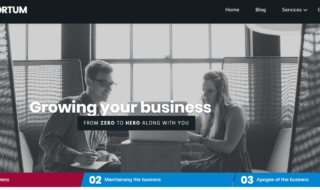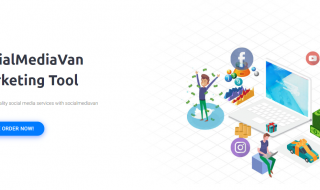Database security includes a variety of tools. These include controls and measures to ensure and maintain confidentiality. Quite often, a virtual data room is used to preserve the integrity and availability of information. Database security should include the following elements:
- Information content;
- Data management system;
- Any related applications;
- Physical or virtual server;
- Computing resources and/or network infrastructure.
Database Security is a comprehensive initiative that encompasses several aspects of information security technologies and practices. Interestingly, the more accessible and convenient the database is for users, the more vulnerable it is. Conversely, the more carefully designed the protection is, the more difficult it becomes to access the data. The use of a data room makes it much easier to ensure the security of information, even for large corporations.
Contents
- Data security — Why is It Important?
- The Leak of Intellectual Property
- A Threat to the Company’s Reputation
- Uninterrupted Access
- Financial Costs for Payment of Fines
- Remediation Costs
- Most Common Threats and Problems
- Internal Threats
- Human Factors Errors
- Software Security Gaps
- Using Vulnerability Formats (SQL/NoSQL)
- An Attack on the Resources of the Computing System
- Hacking Software
- Data Security Tools and Platforms
Data security — Why is It Important?

Any data plays an important role for a business and its loss is fraught with serious consequences. Information leakage is understood as the inability to ensure the confidentiality of data in the database. The severity of the consequences for the company, in this case, depends on several events and factors:
The Leak of Intellectual Property
Intellectual property — trade secrets, inventions, patented techniques — can be critical to maintaining a competitive edge in the marketplace. If intellectual property is stolen or disclosed, it will be difficult or even impossible to maintain or restore a competitive advantage. Therefore, an online data room is often used to store such information.
A Threat to the Company’s Reputation
If customers and partners do not trust the company in matters of data protection, this will inevitably affect sales.
Uninterrupted Access
Some platforms cannot continue working until the data leak incident is resolved.
Financial Costs for Payment of Fines
Failure to comply with global requirements such as Sarbanes-Oxley or Payment Card Industry Data Security Standard (PCI DSS) could have negative financial implications. In the most serious cases, fines can exceed several million dollars for each violation. Using the best data rooms can prevent such incidents.
Remediation Costs
In addition to the costs of informing clients about the incident, the organization has to pay for incident investigation services. Besides, costs can be associated with the need to integrate crisis management, prioritization, or restoration of affected systems.
Most Common Threats and Problems
There are many examples of security negligence (or software misuse) that can lead to data breaches. The following are the most common types and causes of hacker attacks to use databases.
Internal Threats
An internal threat is a security threat from any of the possible sources with privileged access to the database.
- An insider who deliberately commits illegal acts to cause damage.
- An internal attacker who makes negligent errors, leaving the database vulnerable to attacks.
- An infiltrator is a third party who has acquired an identity in some way, such as phishing or accessing a credential database.
Internal threats are among the main causes of security breaches. Such consequences are often the result of an excessive number of privileged accounts. To avoid internal information leakage, it is recommended to figure out what is a virtual data room and how to use this service.
Human Factors Errors
Insecure passwords (or providing them to third parties) or other imprudent actions by users still account for about half of all reported data breaches.
Software Security Gaps
Search for vulnerabilities in a variety of software products, including database management software. Deliberate attacks using them are a source of income for cybercriminals. However, the use of data room software excludes this possibility.
Using Vulnerability Formats (SQL/NoSQL)
This type of threat involves injecting arbitrary strings of SQL or other code into database requests processed by web applications or HTTP headers. Companies that do not adhere to the best practices for creating secure web application code can become victims of these attacks.
An Attack on the Resources of the Computing System
During a Denial of Service (DoS) attack, an attacker rains a massive amount of requests on the target server. Because of this, the server is not able to fulfill the requests of real users and in most cases, this leads to its unstable operation. To quickly restore important information, store a backup on one of the data room services.
Hacking Software
Malware is software designed to exploit vulnerabilities in a database or cause other damage. Malicious software can enter the system through any endpoint device connected to the database network. To minimize damage, compare virtual data rooms and choose the best service for your purposes.
Data Security Tools and Platforms
Today, consumers have access to a wide range of tools and platforms to ensure data protection. A comprehensive solution consists of the use of several functions listed below.
- Cyber Threat Detection. An optimal tool should be used that allows you to scan and categorize vulnerabilities in all available databases. Discovery features are often required to demonstrate regulatory compliance.
- Monitoring data actions. A properly selected solution should support monitoring and auditing of any actions with data across all databases. This should include both physical media and information in virtual data rooms. For a faster response to threats, it is necessary to receive notifications of suspicious activity in real-time.
- Encryption functions. In the event of a data leak, encryption will remain the last barrier to disclosing information. Whichever tool is used, it must provide flexible encryption features to protect data on-premises, in the cloud, hybrid, or multi-cloud environments. Please note the following: Whether the encryption features for files, volumes, and applications meet industry requirements. Whether data masking or advanced security key management is supported. Do not forget to do the same even if you are using online data room software.
- Optimizing data protection and risk analysis. A tool combines data security information in an electronic data room with advanced analytics to extract contextual information. Thanks to this option, the business owner can solve tasks related to optimization, risk analysis, and reporting. The solution chosen must store and synthesize huge amounts of current data. You should also pay attention to the presence of a comprehensive, convenient dashboard for self-auditing and reporting.



